The animal kingdom is full of surprises, and one of the most fascinating adaptations found across species is the tongue. More than just a tool for tasting, tongues serve a variety of incredible purposes in the wild. Some animals have developed tongues that can move at lightning speeds, while others have evolved long, prehensile tongues that can help them reach food or defend themselves. In this list, we’ll explore some of the best tongues in the animal world, showcasing how animals use their tongues for survival, feeding, and even communication.
1. Chameleon
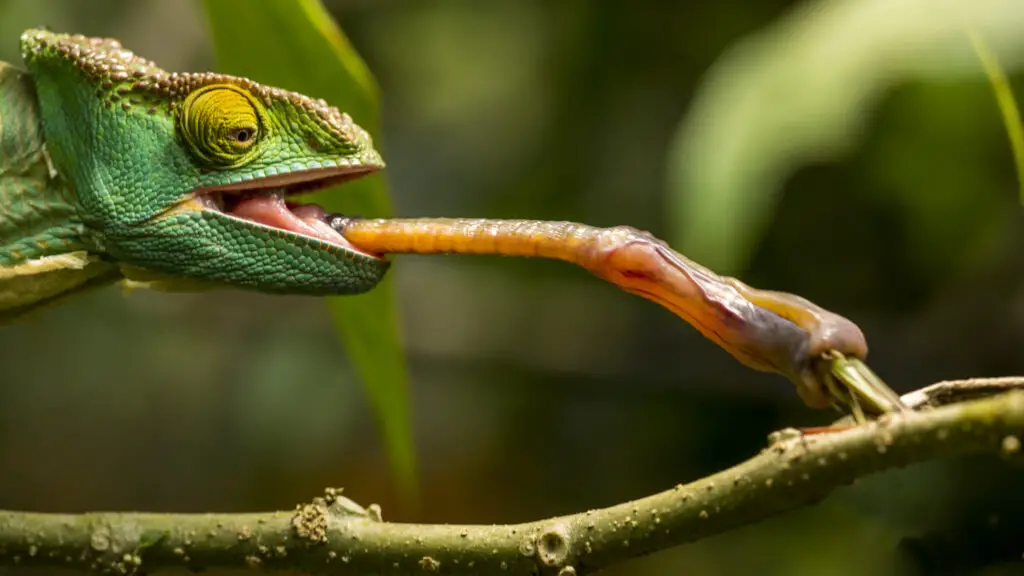
Chameleons have tongues that are basically slingshots. Their tongue can stretch up to twice their body length and launch at speeds of up to 60 miles per hour—faster than a sports car. It only takes about 1/16th of a second for their tongue to grab prey, and the tip is sticky enough to hold onto anything unlucky enough to cross its path. Watching a chameleon’s tongue in action is like seeing a lizard perform a high-speed magic trick. Bugs beware: there’s no escaping this snappy tongue.
2. Blue Whale
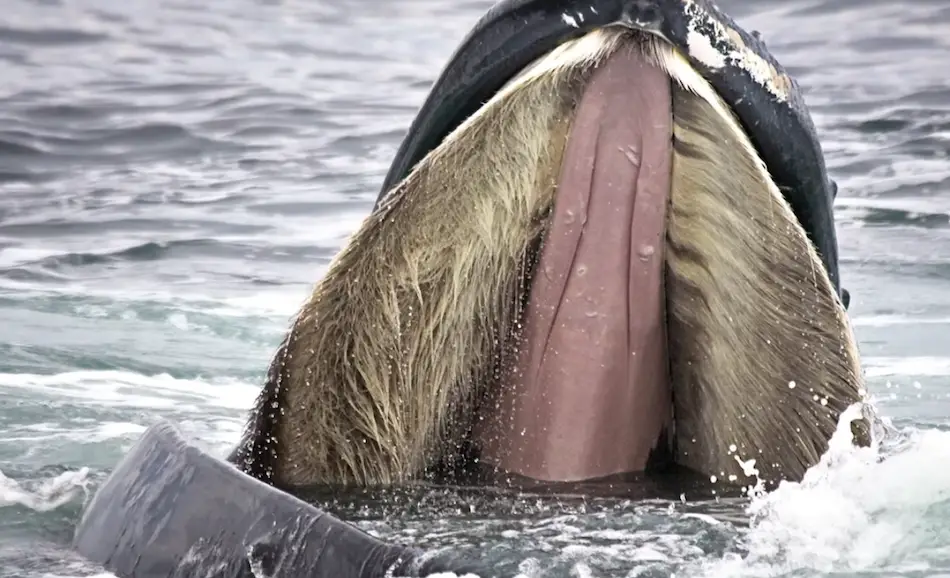
iStock: mzphoto11
Blue whales don’t just have the biggest tongue—they have the heaviest, weighing an astonishing 6,000 to 8,000 pounds, about the same as an elephant! This massive muscle helps them eat up to 4 tons of krill a day. Their feeding process is just as impressive: they gulp huge amounts of water, then push it out with their tongue while their baleen plates—made of keratin, like human hair and nails—act as a filter, trapping the krill inside. These plates, visible in close-ups of their mouths, look like combs and allow the blue whale to feed efficiently. Blue whales truly rule the ocean with their incredible size and clever adaptations.
3. Giraffe

Flickr: Tambako The Jaguar
Giraffes have tongues so long and flexible, that they might make you jealous. At 18 inches, their dark blue tongues are tough enough to handle thorny branches and dexterous enough to pluck individual leaves. But that’s not all—they use their tongue to clean their ears and nose too. Imagine having a tongue that acts as both a fork and a washcloth! With their multitasking tongues and towering height, giraffes take dining etiquette to a whole new level.
4. Anteater
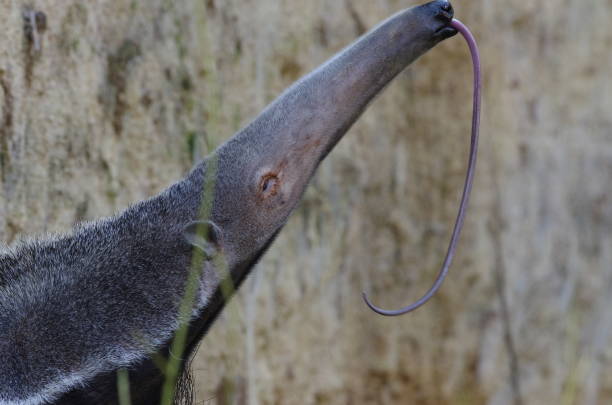
The anteater’s tongue is a remarkable tool for its insect-loving lifestyle. Stretching up to 2 feet long, it’s thin, flexible, and coated in sticky saliva, making it perfect for scooping up ants and termites from deep within mounds. Anteaters can flick their tongue up to 150 times per minute, slurping up thousands of insects in a single feeding session. With no teeth, their muscular tongue does all the heavy lifting, efficiently gathering their prey and swallowing it whole. This specialized tongue is the secret to the anteater’s unique and highly effective dining method.
5. Hummingbird
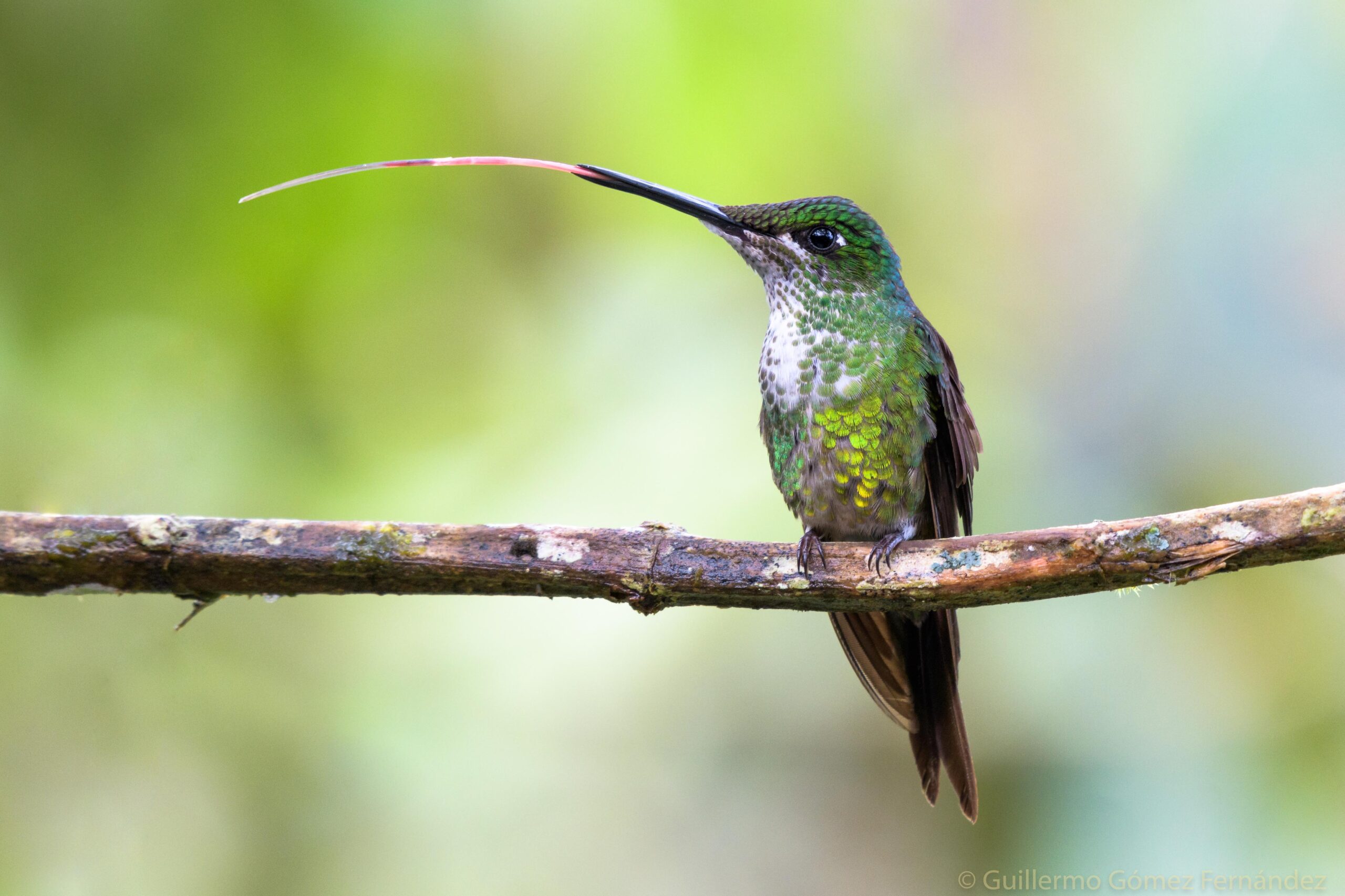
Flickr: Memo Gomez’
Hummingbirds have tongues that work like built-in straws. Their long, forked tongue is lined with grooves that create a wicking effect, allowing them to drink nectar with lightning speed. They can flick their tongue in and out of their beak up to 13 times per second, making them the ultimate speed drinkers. And here’s the twist: when not in use, their tongue wraps around their skull like a coiled spring. Watching a hummingbird feed is like seeing a nature-made energy drink machine in action.
6. Frogs

A frog’s tongue is a masterclass in efficiency and weirdness. It’s attached to the front of their mouth, so it flips out like a slingshot to catch insects. Their tongues are twice as fast as a blink of an eye, making them expert hunters. The sticky mucus on their tongue is about 10 times stickier than honey, ensuring their prey can’t escape. Frogs can snatch bugs bigger than their own heads, which is both hilarious and impressive. Watching a frog in action is like seeing a tiny, green superhero with a very specialized superpower.
7. Woodpecker
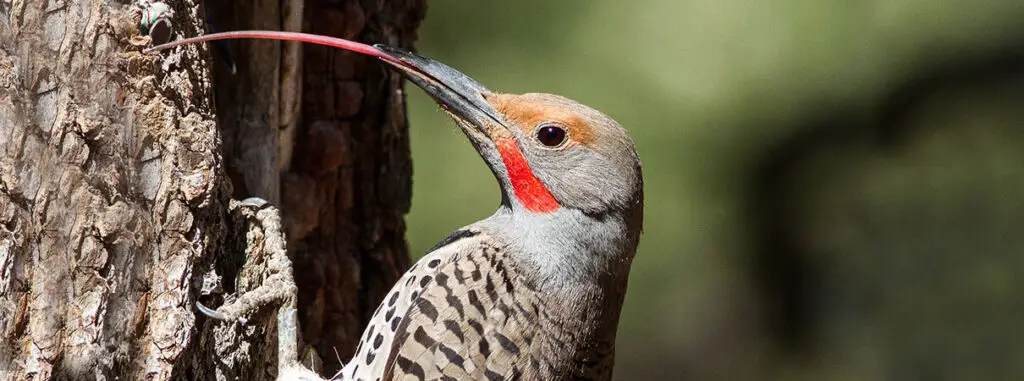
Northern Flicker. Photo by Ken Griffiths/Shutterstock
Woodpeckers have tongues that are as fascinating as their famous pecking. When not in use, their tongue wraps around the back of their skull, acting like a built-in helmet to cushion their brain. This setup allows them to peck at 20 times per second without hurting themselves. Their tongue is also barbed and sticky, perfect for pulling insects out of tree bark. Watching a woodpecker work is like seeing a master craftsman at their peak—and their tongue is their ultimate tool.
8. Sloth
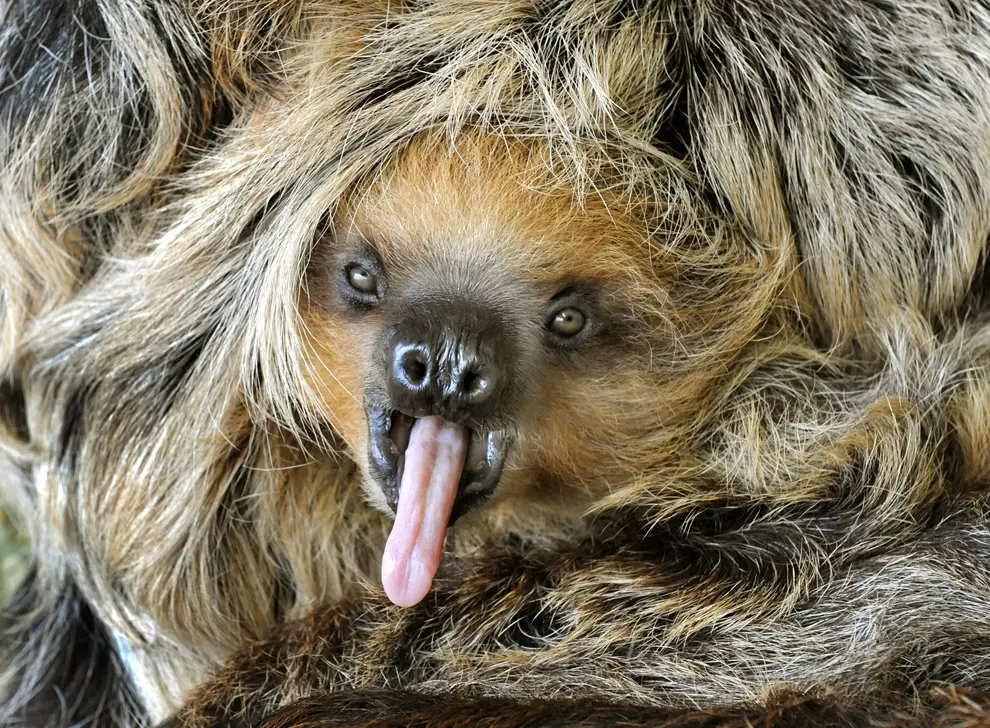
Flickr: trong.tan.773
Sloths may be famous for their slow pace, but their tongues are surprisingly efficient when it comes to food. These relaxed creatures use their long, flexible tongues to grab leaves, flowers, and fruit from trees without wasting any energy. Their slow movements help them stay hidden from predators, but their tongues are quick enough to pluck their next bite with precision. Watching a sloth eat is like seeing a master of relaxation in action—they barely move, yet their tongue gets the job done effortlessly. Who knew laziness could look so skillful?
9. Chilean Rose Tarantula
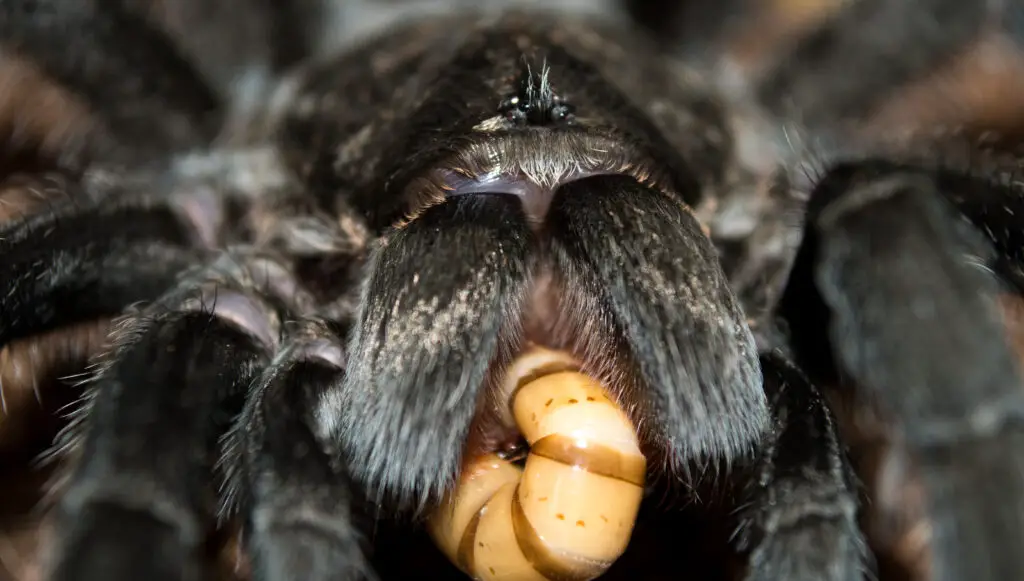
Shutterstock: MMrMikeMcD
The Chilean rose tarantula doesn’t have a tongue, but it eats in a way that’s both fascinating and a little creepy. Instead of chewing, it vomits digestive juices onto its prey, turning the meal into a gooey soup. Then, it slurps up the liquid like a spider-sized smoothie. While this may sound unappetizing, it’s an incredibly efficient way to digest food. Watching a tarantula feed is like witnessing nature’s weirdest cooking show—gross, but you can’t look away.
10. Pangolin
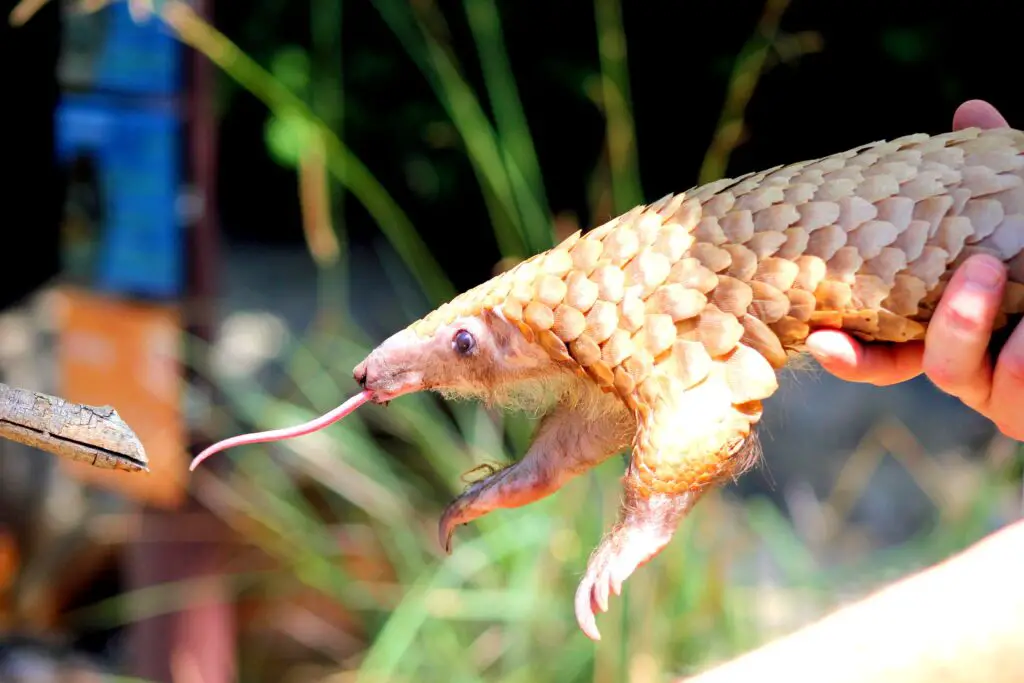
Flickr: Megzy Tred
Pangolins have tongues that are longer than their entire body—talk about impressive! Their sticky, slimy tongue can stretch up to 16 inches and is perfect for scooping up ants and termites. Unlike most animals, their tongue is attached deep in their chest, giving it extra reach and flexibility. These quirky creatures can consume 70 million insects per year, making their tongue one of the most effective pest control tools in nature. Watching a pangolin feed is like seeing a bug vacuum cleaner in action—oddly satisfying and undeniably unique.
11. Tarsier
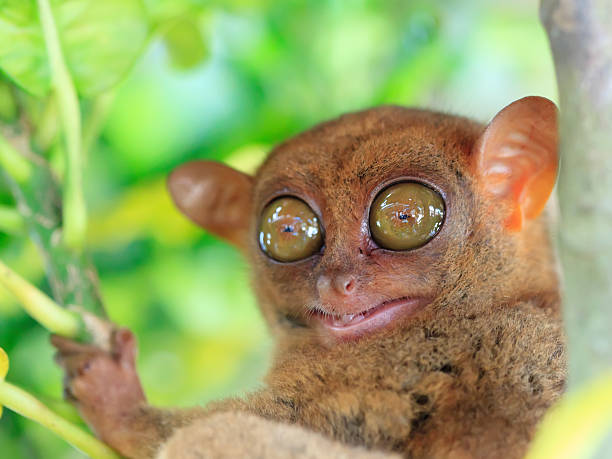
iStock: Olga Khoroshunova
Tarsiers are tiny primates with huge eyes, but their tongue is the real star of the show. These nocturnal hunters use their long, sticky tongues to snap up insects with precision. Their tongue’s speed and accuracy make it the perfect tool for a quick midnight snack. Combine their tongue skills with their ability to leap 40 times their body length, and tarsiers might just be some of the most agile hunters in the animal kingdom.
12. Bumblebee Bat
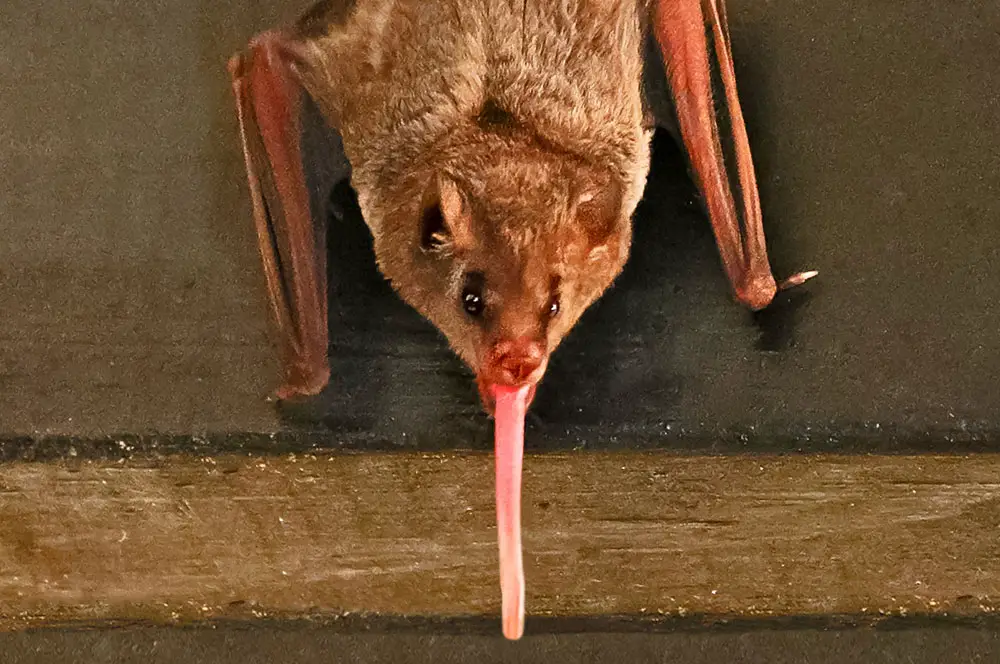
Wikipedia
The bumblebee bat may be the smallest mammal in the world, but its tongue works overtime. This tiny bat, which weighs about as much as a penny, uses its long, thin tongue to lap up nectar from flowers. Stretching almost as long as its body, the tongue is equipped with hair-like bristles at the tip to help scoop up food. Think of it as a built-in honey dipper. Despite their size, these bats are critical pollinators, proving that even the tiniest tongues can make a big difference in the natural world.
13. Frogfish
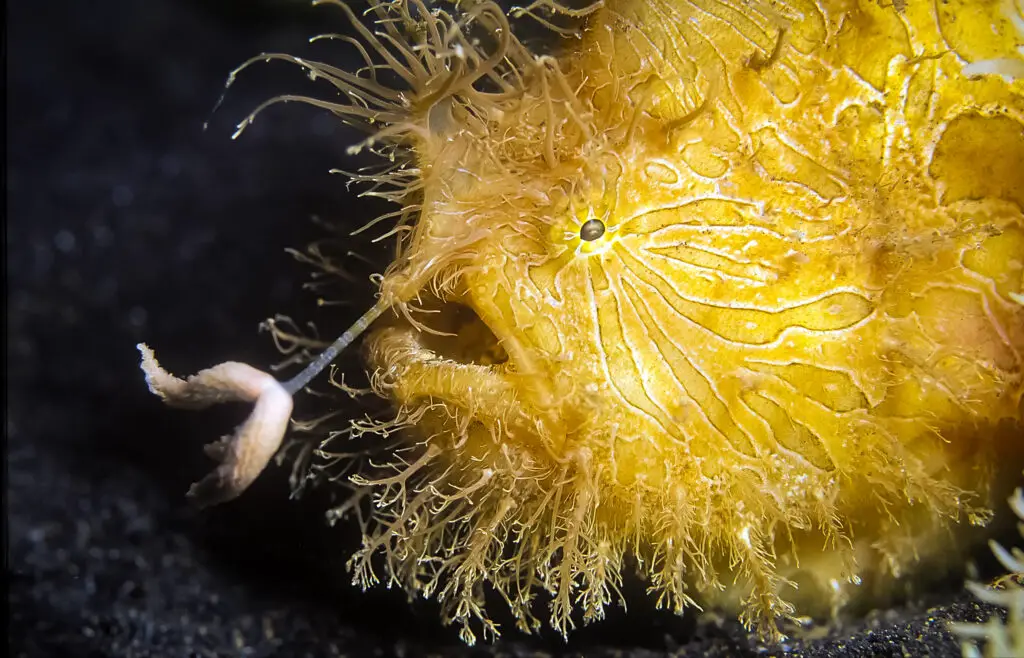
Shutterstock: Jack FotoVerse
The frogfish doesn’t just have a tongue—it has a built-in fishing rod! This bizarre creature uses a specialized appendage on its head, called an esca, to mimic prey and lure unsuspecting fish. While not technically a tongue, this bait-and-snatch technique is so effective it’s downright funny. Once its prey gets close, the frogfish opens its mouth faster than the human eye can see, sucking in dinner like a vacuum. It’s proof that in the ocean, the weirdest tools often get the job done best.
14. Okapi: The Tongue That Does It All
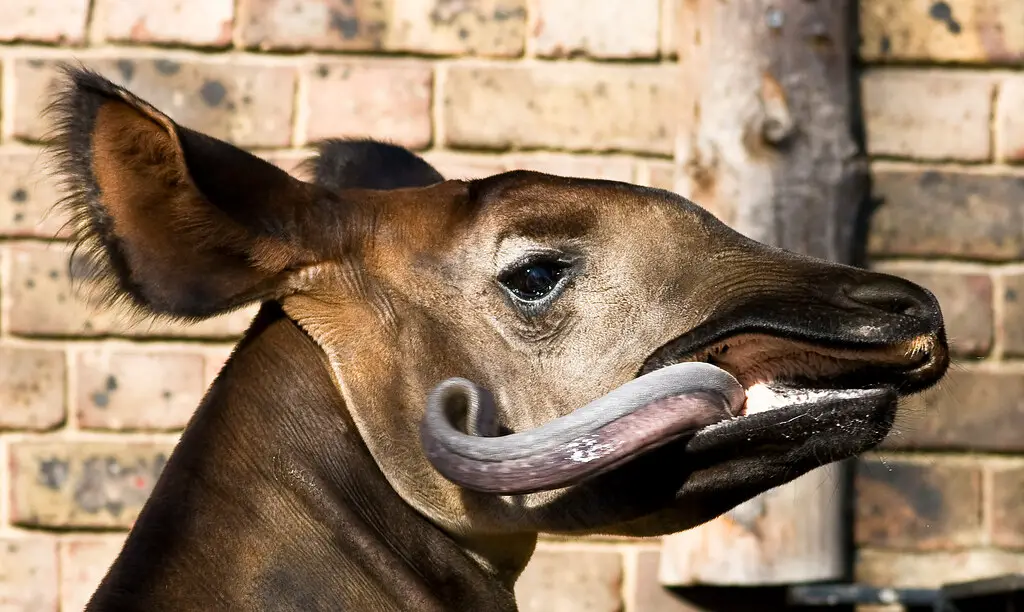
Flickr: Chris Knowles
An okapi’s tongue is a true multitasker. Measuring up to 14 inches, this giraffe cousin uses its long, flexible tongue to grab leaves, clean its eyes, and even reach inside its ears! The tongue’s dark color protects it from sunburn as the okapi snacks on its favorite forest plants. Watching an okapi use its tongue is both mesmerizing and hilarious—it’s like they have their own built-in washcloth that never takes a day off.
From lightning-fast strikes to intricate feeding adaptations, the agility of animal tongues is a fascinating part of nature’s arsenal. Whether it’s the chameleon’s precision or the giraffe’s prehensile reach, these incredible tongues have evolved to help animals survive and thrive in their respective environments. Their unique traits are perfect examples of nature’s ingenuity at work, providing animals with the tools they need to capture prey, interact with their surroundings, and even defend themselves. The diverse tongues of the animal kingdom are truly an awe-inspiring display of evolutionary brilliance!


